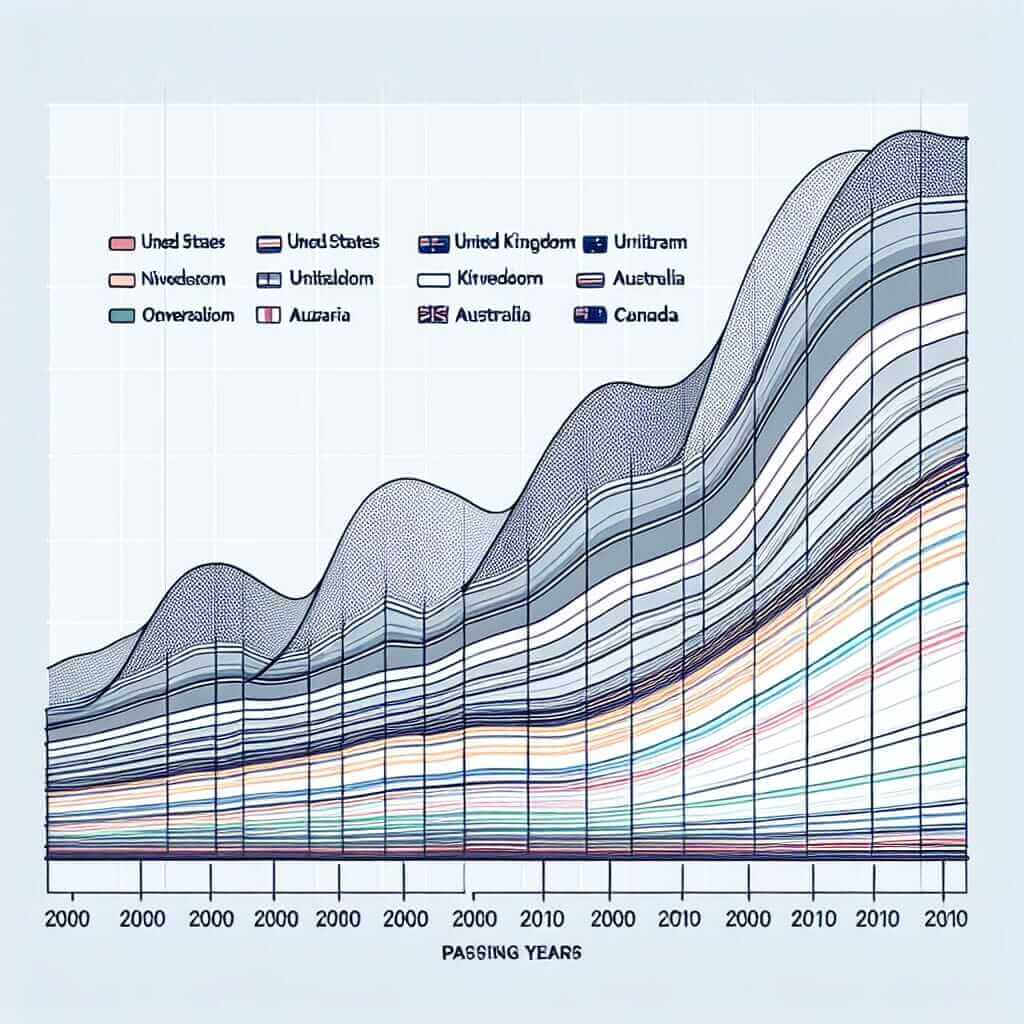As an IELTS instructor with over two decades of experience, I understand the significance of a strong writing score for your overall IELTS band. One of the most common questions I encounter from my students is, “How many words in IELTS Writing Task 1?”. This seemingly simple question holds more weight than you might think. While exceeding the word count won’t directly penalize you, it can indirectly impact your score. Let’s delve into why word count matters and how to master Task 1.
The Importance of Word Count in IELTS Writing Task 1
The IELTS Writing test has a strict time limit of 60 minutes for two tasks. Task 1, which involves describing visual data, should ideally be completed within 20 minutes. This time constraint necessitates efficient writing and a keen understanding of the task’s requirements.
While there’s no official penalty for exceeding the 150-word minimum, writing too much can be detrimental for several reasons:
Time Management:
Writing excessively in Task 1 eats into the time allotted for Task 2, which carries more weight in your overall writing score.
Focus and Concision:
A concise and focused response demonstrates your ability to analyze and present information effectively. Rambling or including irrelevant details can obscure your main points and affect your score for Task Achievement and Coherence & Cohesion.
Proofreading:
Writing more means more potential for grammatical errors and spelling mistakes. A shorter, well-crafted response allows ample time for thorough proofreading, improving your chances of scoring higher for Grammatical Range & Accuracy.
Mastering the 150-Word Requirement
While aiming for brevity, it’s crucial to provide a complete and accurate description of the visual data. Here are some tips to help you hit the sweet spot:
Analyze the Data:
Before you start writing, spend a few minutes carefully analyzing the visual information. Identify the key trends, patterns, and significant features you need to include.
Plan Your Response:
Outline your response before you start writing. Divide your essay into paragraphs: an introduction, body paragraphs (usually 2-3) to describe the main features, and a brief conclusion (optional for Task 1).
Be Selective:
Focus on the most significant information. Avoid describing every single detail. Instead, summarize the key trends and support them with specific data points.
Use Precise Language:
Utilize appropriate vocabulary and grammatical structures to present your analysis clearly and concisely. Avoid redundancy and repetition.
Practice Regularly:
Familiarize yourself with different types of visual data (graphs, charts, maps, diagrams) and practice writing responses within the time limit. Seek feedback from your IELTS instructor or language partner to identify areas for improvement.
Example from an IELTS Writing Task 1
Let’s look at an example to illustrate how to write a concise yet comprehensive response:
Question:
The graph below shows the number of international students enrolled in universities in four different countries from 2000 to 2010.

Sample Response:
The line graph illustrates the trends in international student enrollment across four countries over a decade, from 2000 to 2010. Overall, the United States consistently maintained the highest number of international students, while Australia showed the most significant growth.
In 2000, the US had approximately 600,000 international students, followed by the UK with around 300,000. Australia and Canada had considerably fewer enrollments, with approximately 150,000 and 100,000 respectively.
Over the following ten years, the number of international students in the US increased steadily, reaching just over 800,000 by 2010. Similarly, Australia experienced a dramatic surge, with enrollments more than doubling to reach over 350,000. In contrast, the UK and Canada saw only modest increases, with figures reaching approximately 400,000 and 150,000 respectively by the end of the decade.
(Word count: 153 words)
Key Takeaways
Remember, clarity and accuracy are paramount. While the word count is a factor, it’s not the only determinant of your score. Focus on delivering a well-structured, informative, and grammatically accurate response that effectively communicates the key trends in the visual data.
As you continue your IELTS preparation journey, remember that practice makes perfect. Keep refining your writing skills, and soon you’ll be well on your way to achieving your desired IELTS score.